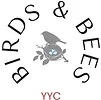THE ORIGINAL JAY
The Eurasian jay is the original “jay” after which all other jays are named. Occurs over a vast region from Western Europe and north-west Africa to the Indian subcontinent and further to the eastern seaboard of Asia and down into south-east Asia. This jay is known for its mimicry, often sounding so like a different species that it is virtually impossible to distinguish its true identity unless the jay is seen. It will even imitate the sound of the bird it is attacking, such as a Tawny owl, which it does mercilessly if attacking during the day. However, the jay is a potential prey item for owls at night and other birds of prey such as Goshawks and Peregrines during the day.
GRAY JAY
Gray Jays nest extraordinarily early in the year. Nest-building may start in February when there is a metre of snow on the ground. Several things make early nesting possible. Gray jay nests are large and well insulated thanks, in part, to hundreds of cocoons that fill in the interstices of the bulky platform of dry, dead twigs. Close to the centre are finer twigs, strips of bark, arboreal lichens, and finally, lining the cup itself, several hundred grouse feathers or an equivalent amount of hair or fur that make up the cocoons. Whether it is built close to the trunk of a spruce or fir, or out on a long branch, the nest is almost always on the south side of the clearing, creek-edge, or some similar break in the forest.
BLUE JAY
Beginning in early May, the courtship habits of this bird begins. Generally a group of seven or more are gathered together in the top of a tree. One female is among this group. When the female flies off, the males will follow and land near her, bobbing their heads up and down and displaying for her. The female will eventually select a mate from this group and the nesting cycle will follow.
STELLER’S JAY
During courtship, the male feeds the female. Adults are quiet and secretive when nesting, but aggressive if the nest is threatened. The nest is usually constructed in a coniferous tree, built by both sexes and is a bulky and ragged cup of twigs, weeds, moss, and dry leaves cemented together with mud and lined with fine grass, rootlets, and pine needles. Bits of paper are often added to the nest.
If you enjoyed this post, we encourage you to signup for our newsletter:
Sign up for our monthly newsletter that keeps you up to date on our in store specials, monthly savings and has great articles about local birds, It also lets you know what upcoming seminars and workshops are happening in our Classroom/Gallery.
By submitting this form, you are consenting to receive marketing emails from: . You can revoke your consent to receive emails at any time by using the SafeUnsubscribe® link, found at the bottom of every email. Emails are serviced by Constant Contact

